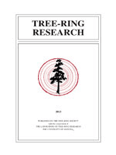
Tree-Ring Research
Scope & Guideline
Pioneering Research on the Rhythms of Nature
Introduction
Aims and Scopes
- Dendroclimatology:
Research on the relationship between tree growth and climate variables, utilizing tree-ring data to reconstruct historical climate patterns. - Dendroecology:
Studies examining the ecological implications of tree rings, including growth responses to environmental changes and disturbances. - Cultural and Historical Applications:
Investigations into the use of tree-ring analysis for historical dating, art history, and understanding cultural practices related to trees. - Methodological Innovations:
Development and application of new techniques in tree-ring analysis, including imaging technology and statistical modeling. - Global and Regional Case Studies:
Focused research on specific geographic regions or species, contributing to the global understanding of tree-ring dynamics.
Trending and Emerging
- Climate Change Impact Studies:
There is a notable increase in research examining the effects of climate change on tree growth patterns, emphasizing the urgent need to understand how changing climates affect forest ecosystems. - Interdisciplinary Research:
Emerging studies are increasingly incorporating interdisciplinary approaches, combining dendrochronology with fields like archaeology, anthropology, and climate science to address complex research questions. - Technological Advancements in Data Collection:
The use of advanced imaging techniques and statistical models in tree-ring analysis is on the rise, enhancing the accuracy and depth of studies. - Global Climate Reconstructions:
A growing focus on creating comprehensive climate reconstructions from tree-ring data across diverse geographic regions is evident, highlighting the global interconnectivity of climatic events. - Ecological Responses to Climate Variability:
Research is increasingly focusing on how different tree species respond to climate variability, contributing valuable insights into forest management and conservation efforts.
Declining or Waning
- Historical Artefact Dendrochronology:
There seems to be a decreasing number of studies focusing on dendrochronology related to historical artefacts and furniture, which may reflect a shift towards more ecological and climate-related research. - Traditional Dendrochronological Techniques:
As new technologies and methods emerge, traditional techniques may be waning in popularity, with fewer papers focusing solely on conventional dating methods without integrating modern approaches. - Localized Dendrochronological Studies:
Research that focuses narrowly on specific localities without broader implications or comparisons appears to be less frequent, possibly due to a shift towards more global and integrative studies.
Similar Journals
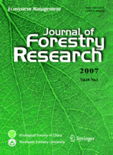
JOURNAL OF FORESTRY RESEARCH
Shaping the future of forestry with cutting-edge insights.JOURNAL OF FORESTRY RESEARCH, published by Northeast Forestry University in China, stands as a pivotal platform for advancing the field of forestry science. With an ISSN of 1007-662X and an E-ISSN of 1993-0607, this esteemed journal has maintained its commitment to disseminating high-quality research since its inception in 1997, converging into a recognized authority through the years. Currently boasting a Q1 ranking in the Forestry category for 2023, it ranks 18th out of 174 journals in its field on Scopus, highlighting its vital role in shaping contemporary forestry studies. The journal focuses on a broad spectrum of topics pertinent to forestry, including sustainable forest management, ecology, and conservation efforts, making it an indispensable resource for researchers, professionals, and students alike. Although it is not an open-access publication, the insights shared within its pages promise to contribute significantly to the advancement of knowledge and practices in forestry. The journal's significant impact and relevance are underscored by its operations from Harbin, People's Republic of China, where it continues to foster scholarly communication in the world of forestry research.
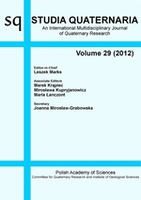
Studia Quaternaria
Pioneering research for a deeper understanding of geology.Studia Quaternaria is a leading academic journal published by the Polish Academy of Sciences, Institute of Geological Sciences, specializing in the dynamic fields of Earth-Surface Processes and Geology. With an ISSN of 1641-5558 and an E-ISSN of 2300-0384, this journal has been a prominent platform for scholarly discourse since its inception in 2000. Operating under the open-access model, it aims to disseminate high-quality research that is accessible to a global audience. Studia Quaternaria holds a Q3 ranking in both relevant quartiles as of 2023, indicating its commitment to advancing knowledge in its disciplines despite centering in competitive academic environments. With its publications indexed in Scopus, the journal remains a valuable resource for researchers, professionals, and students looking to stay abreast of innovations and discoveries in Earth-Surface Processes and Geology. Encompassing a broad scope of studies, the journal represents an essential contribution to the geological sciences, fostering a deeper understanding of our planet's changes and processes.
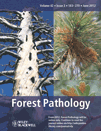
FOREST PATHOLOGY
Unraveling the Secrets of Forest EcosystemsFOREST PATHOLOGY is a premier journal published by Wiley that focuses on the intricate relationships between trees, pathogens, and forest health. With an ISSN of 1437-4781 and an E-ISSN of 1439-0329, this British journal has garnered an impressive reputation in the fields of Ecology and Forestry, achieving a Q2 Quartile ranking in both categories as of 2023. The journal invites researchers and professionals to explore cutting-edge studies and case reports that delve into forest pathology, contributing to the understanding of disease dynamics and management in forest ecosystems. Currently indexed in Scopus, it ranks 61st out of 174 in the Forestry category and 214th out of 461 in Ecology, reflecting its impact and relevance in advancing the field. Access options are available to cater to a wide audience, emphasizing the journal's commitment to disseminating vital knowledge that enhances forest management practices and ecological resilience. FOREST PATHOLOGY stands as an essential resource for those dedicated to the health and sustainability of forest ecosystems.
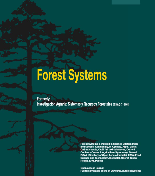
Forest Systems
Empowering researchers to shape the future of forestry.Forest Systems, an esteemed open-access journal published by CONSEJO SUPERIOR INVESTIGACIONES CIENTIFICAS-CSIC in Spain, has been a dedicated platform for advancing knowledge in the fields of ecology, forestry, and soil science since its inception in 1991. With an ISSN of 2171-5068 and E-ISSN 2171-9845, the journal is committed to disseminating high-quality research that addresses critical issues related to forest ecosystems and their management. Forest Systems is positioned within the Q4 category in Ecology, Evolution, Behavior and Systematics, and Q3 in both Forestry and Soil Science, evidencing its growing influence and relevance in these disciplines. Researchers will find a rich repository of articles that not only contribute significantly to academic discourse but also foster practical solutions to contemporary environmental challenges. As it converges from 2010 to 2024, the journal aims to enhance its outreach and impact, facilitating access for professionals, students, and policymakers committed to sustainable forest management and ecological conservation.

Journal of Forest Science
Advancing forest knowledge for a sustainable future.Journal of Forest Science, published by the Czech Academy Agricultural Sciences, serves as a pivotal resource in the field of forestry and soil science. With its ISSN 1212-4834 and E-ISSN 1805-935X, this Open Access journal has been delivering insightful research since 2003, making knowledge freely available to researchers and practitioners globally. Hailing from the Czech Republic, the journal has established a notable impact within the academic community, as evidenced by its placements in the Q2 quartile for Forestry and Q3 for Soil Science according to the latest rankings. This positions the Journal of Forest Science favorably within academic discourse, ranking #73 out of 174 in Forestry and #84 out of 159 in Soil Science on Scopus, placing it at the 58th and 47th percentiles respectively. Covering a wide range of topics that intersect with environmental sustainability, forest management, and ecological research, the journal aims to foster innovation and collaboration within the scientific community. Researchers, professionals, and students can access published articles easily, bolstering the advancement of knowledge in forest science and its related disciplines.
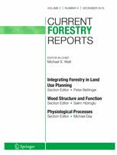
Current Forestry Reports
Uncovering contemporary trends in forest science and conservation.Current Forestry Reports, published by Springer International Publishing AG, stands at the forefront of forestry and ecological research, boasting an impressive array of quartile rankings in 2023 such as Q1 in Ecology and Forestry. With an ISSN of 2198-6436, this journal has emerged as a pivotal platform for disseminating innovative research findings and insights critical to the sustainable management of forest ecosystems. Operating out of Switzerland, it covers a broad scope that spans from ecological theory to practical forestry applications and landscape conservation. Notably, it ranks #3 out of 174 in Agricultural and Biological Sciences: Forestry and #4 out of 211 in Environmental Science: Nature and Landscape Conservation, reflecting its high impact and relevance in the field, placing it in the top percentiles in multiple categories. This open-access journal endeavors to provide a comprehensive understanding of contemporary issues, trends, and methodologies in forestry and related disciplines, making it an indispensable resource for researchers, practitioners, and students who are dedicated to advancing knowledge and practices in forest science.

HOLOCENE
Advancing Knowledge of Earth’s Transformative Epoch.HOLOCENE is a leading academic journal published by SAGE Publications Ltd that serves as an essential platform for researchers and scholars in the fields of archaeology, earth-surface processes, ecology, and paleontology. With an impressive Q1 ranking in prominent categories like Archaeology, Earth-Surface Processes, and Paleontology, this journal is dedicated to disseminating high-quality research that examines the dynamic interactions between humans and their environment throughout the Holocene epoch. Released biannually, it covers innovative studies and comprehensive review articles that contribute to our understanding of environmental changes and their implications across various disciplines. Although it does not offer open access, HOLOCENE maintains a robust reputation with an influential impact on the academic community, making it a vital resource for professionals, researchers, and students who aim to expand their knowledge and explore current developments in Earth and environmental sciences. With a commitment to excellence, HOLOCENE continues to shape the discourse in its field from its headquarters in the United Kingdom.

DENDROCHRONOLOGIA
Connecting Nature's History with Today's ChallengesDendrochronologia is a prestigious journal dedicated to the study of tree rings and their implications for understanding environmental changes, climate variability, and ecological dynamics. Published by Elsevier GmbH in Germany, it has consistently reached high academic standards, holding a remarkable Q1 ranking in both Ecology and Plant Science as of 2023, demonstrating its significant impact within these fields. The journal aims to foster interdisciplinary dialogue through the dissemination of original research, reviews, and methodological advancements related to dendrochronology, appealing to researchers, students, and professionals who seek to deepen their knowledge of the interactions between terrestrial ecosystems and climate change. Although it does not currently offer an open access option, Dendrochronologia remains an essential resource for those in the scientific community, with valuable insights that contribute to the understanding of biodiversity and ecological resilience.

Forest Ecosystems
Connecting research to conservation efforts.Forest Ecosystems is a prestigious open access journal published by KEAI PUBLISHING LTD, dedicated to advancing knowledge in the fields of forestry, ecology, and conservation. Established in 2014 and located in Beijing, China, this journal has rapidly gained prominence, achieving Q1 status in multiple categories, including Ecology, Evolution, Behavior and Systematics, and Forestry in 2023. With an impressive rank of 19 out of 174 in the Scopus category of Agricultural and Biological Sciences - Forestry, it stands in the 89th percentile, reflecting its influential contributions to the field. The journal fosters scholarly discourse and disseminates innovative research aimed at understanding forest ecosystems and their vital role in our environment. Offering a robust platform for researchers, professionals, and students, Forest Ecosystems ensures accessibility through its open access format, enabling a wider audience to engage with and benefit from cutting-edge research dedicated to the stewardship of forest resources.
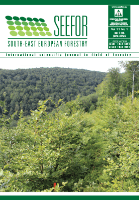
SEEFOR-South-East European Forestry
Exploring the dynamics of forestry in a changing environment.SEEFOR-South-East European Forestry is a premier open-access journal dedicated to advancing knowledge in the field of forestry and environmental science. Published by the CROATIAN FOREST RESEARCH INSTITUTE, this journal has been operational since 2010, providing a platform for research that focuses on the unique forestry dynamics of the South-East European region. With an ISSN of 1847-6481 and an E-ISSN of 1849-0891, SEEFOR is recognized for its commitment to disseminating high-quality research that addresses critical issues in forestry management, conservation, and sustainable development. The journal is indexed in Scopus, placing it within the third quartile (Q3) of forestry journals, reflecting its significance within the academic community. SEEFOR aims to connect researchers, practitioners, and policymakers, fostering collaboration and innovation in fostering sustainable forestry practices in Croatia and beyond. Submissions are welcome in a range of areas including forest ecology, policy development, and socio-economic impacts, making it an invaluable resource for professionals and students alike.